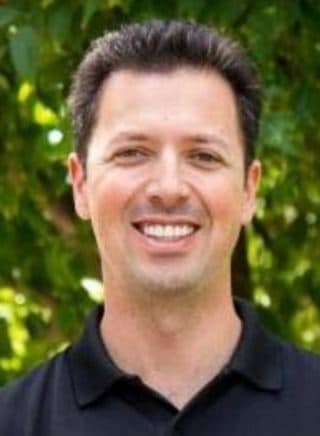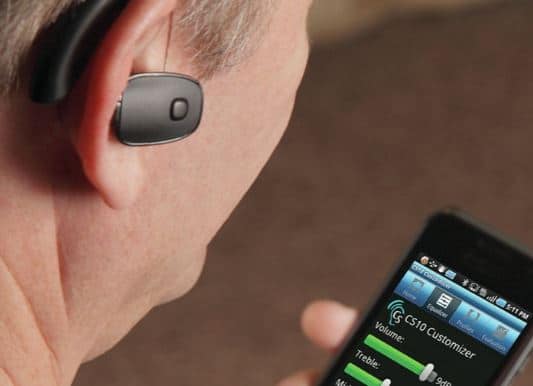Editor’s Note: Today’s post continues the discussion by Abigail Farmer and Bruno Sarda on the evolution of hearing aid technology.
However laudable the goal of encouraging medical evaluation might be, one result of this lack of insurance/Medicare coverage and access is to resort to other forms of hearing assistance, particularly for those with only marginal hearing loss.1 Personal sound amplification products (PSAPs) are a primary example. These devices are sold over the counter, are not considered medical devices by the FDA, and are much less expensive than hearing aids.2

Does proprietary tech drive up costs of hearing aids?
Unlike hearing aids, which compensate for impaired hearing, PSAPs are designed to help individuals hear better in noisy situations like restaurants or large parties—situations where individuals with normal hearing would have difficulty.3 A typical PSAP generally costs hundreds, not thousands of dollars, and often offers similar technology as hearing aids.4
This price difference stems from the fact that PSAPs make use of free Bluetooth technology,5 whereas hearing aids use proprietary signal processing and transmission technology—which explains why a hearing aid that costs $440 to manufacture can sell for $4400.6
Although the FDA stresses that PSAPs should only be used by individuals with normal hearing, because PSAPs are not regulated medical devices, users can purchase them without first having a professional hearing exam.7 This, coupled with PSAPs’ low price points, create the “temptation” that individuals with hearing loss will turn to PSAPs instead of having a hearing aid fitted professionally.
And of course, using a PSAP creates the risk of damaging hearing further—or even missing a treatable cause for the hearing loss.8 Nevertheless, because they are relatively inexpensive and generally more stylish, PSAPs are becoming a popular option for those not willing to commit to a hearing aid.9
Not only do PSAPs cost less than hearing aids, they are particularly attractive because they offer a wider range of features. Some devices can be linked with an iPhone, others allow the user to stream music, and still others can isolate certain voices, such as a dinner companion’s.10 But as PSAPs add functionality beyond merely making things louder, they also blur the line between assistive and enhancement devices: the ability to isolate a single voice goes beyond making all sounds louder, it allows the user to listen better.
 Meanwhile, technologies like Google Glass use bone conduction to transmit sound—offering yet another way to improve low-level hearing loss that is not a traditional hearing aid.11 As individuals turn to iPhones to be their cameras, e-mail devices, social media monitors, and yes, telephones, perhaps they will come to expect more of their hearing aids as well. As society expects more of its digital devices, why should hearing aids be any different?
Meanwhile, technologies like Google Glass use bone conduction to transmit sound—offering yet another way to improve low-level hearing loss that is not a traditional hearing aid.11 As individuals turn to iPhones to be their cameras, e-mail devices, social media monitors, and yes, telephones, perhaps they will come to expect more of their hearing aids as well. As society expects more of its digital devices, why should hearing aids be any different?
Military Funding
Because soldiers are at such high risk of hearing loss, the United States military has been active in researching the causes and possible treatments for hearing loss. In 2009, the Department of Defense founded its Hearing Center of Excellence (HCE) to “heighten readiness and continuously improve the health and quality of life of service members through . . . the development of initiatives focused on the prevention, diagnosis, mitigation, treatment, rehabilitation and research of hearing loss and auditory-vestibular injury.”12
Much of the HCE’s research focuses on prevention, but given the realities of combat, these best practices are often difficult to adhere to.13
The HCE does not operate alone. It conducts collaborative research with research labs, medical treatment facilities, non-profits, industry partners, and other centers of excellence.14 In addition, seven DOD research centers conduct basic and applied research into hearing loss, and one Navy medical center is researching pharmacological therapies.15
DARPA has entered the hearing loss arena with plans to invest $60 million over four years in Neural Engineering System Design (NESD), a new program to develop an implantable neural interface capable of data transfer between the human brain and the digital world.16

Image courtesy DARPA
The interface would translate electrochemical signals from neurons to the binary used by computers—essentially allowing human brains to talk directly to computers.17 The implications for individuals with hearing loss are exciting. The interface could feed digital auditory information to the brain at a resolution that far surpasses what is currently possible.18
This interface could go beyond restoring lost hearing to normal levels and taking human capabilities beyond what is naturally possible. Of course, the technology required for this program to succeed is still largely in development.
DARPA is currently recruiting leading industry stakeholders willing to share “state-of-the-art prototyping and manufacturing services and intellectual property to NESD researchers on a pre-competitive basis.”19
DARPA does note the potential for these partners to help transition any resulting technologies into the commercial arena.20 Still, these projects indicate that military involvement in hearing loss technology continues to be strong.
*Stay tuned for Part 11. Images courtesy DARPA, jhpadv, austinregionalclinic
References:
- Staab, Hearing Aid Distribution III, supra note 166.
- Melinda Beck, Testing, Testing… Can You Hear Better Now?, W.St.J.: Health J. (Sept. 10, 2012, 8:27 PM).
- Id.; ¶ 350,739 Regulatory Requirements for Hearing Aid Devices and Personal Sound Amplification Food Drug Cosm. L. Rep. P 350739
- Beck, supra note 182.
- Membership Types/Levels, Bluetooth, (last visited Apr. 25, 2016).
- Herbert, supra note 167.
- Id.; ¶ 350,739 Regulatory Requirements for Hearing Aid Devices and Personal Sound Amplification Food Drug Cosm. L. Rep. P 350739
- Beck, supra note 182.
- Id.
- Herbert, supra note 167.
- Thomas Frey, How Google Glass Will Disrupt the Hearing Aid Industry?, Futurist Speaker (Apr. 26, 2016), .
- Mission and Overview, supra note 98.
- Id.
- Id.
- Id.
- Bridging the Bio-Electronic Divide, DARPA (last visited Apr. 25, 2016).
- Id.
- Id.
- Id.
- Id.

Abigail Farmer graduated summa cum laude with B.A.s in French and Spanish from Texas A&M University. Before starting law school, she interned with the U.S. Commercial Service in Paris, France. Abigail served as Executive Note and Comment Editor for the Arizona State Law Journal from 2014–2015 and as the Hong Kong team editor for the Wilhem C. Vis International Commercial Arbitration Moot from 2015–2016. She also co-authored an article on bitcoins and estate planning, which won the Mary Moers Wenig Student Writing Competition and was published in the ACTEC Law Journal; she and her co-author presented the article at the Arizona State Bar Convention. Abigail is graduating summa cum laude with a J.D. from the Sandra Day O’Connor College of Law and with an M.B.A. from the W.P. Carey School of Business. After graduation, Abigail will join Shell’s legal department in Houston, Texas
 Bruno Sarda is a leading practitioner in the field of corporate sustainability at Dell, where he’s worked since 2005. In his role as Director of Social Responsibility, he leads the company’s strategy on social aspects of sustainability, including human rights and labor practices, working with internal and external stakeholders. He also manages Dell’s groundbreaking partnership with Phoenix-based TGen (Translational Genomics Research Institute) to accelerate adoption of precision medicine in addressing childhood cancer. In addition, Sarda is an adjunct faculty member and Senior Sustainability Scholar at Arizona State University, where he teaches and helped design and launch the Executive Master’s for Sustainability Leadership working with the Rob and Melani Walton Sustainability Solutions Initiatives at ASU.
Bruno Sarda is a leading practitioner in the field of corporate sustainability at Dell, where he’s worked since 2005. In his role as Director of Social Responsibility, he leads the company’s strategy on social aspects of sustainability, including human rights and labor practices, working with internal and external stakeholders. He also manages Dell’s groundbreaking partnership with Phoenix-based TGen (Translational Genomics Research Institute) to accelerate adoption of precision medicine in addressing childhood cancer. In addition, Sarda is an adjunct faculty member and Senior Sustainability Scholar at Arizona State University, where he teaches and helped design and launch the Executive Master’s for Sustainability Leadership working with the Rob and Melani Walton Sustainability Solutions Initiatives at ASU.






